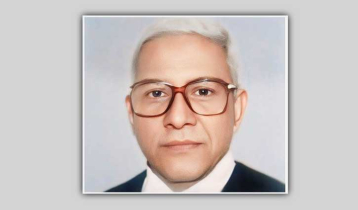The fossil that rewrites our history
4 || risingbd.com

Risingbd Desk: Researchers have taken one step closer to understanding the complex relationship between modern humans and Neanderthals, with the study of an ancient bone.
Genetic data recovered from the bone, which belonged to a Neanderthal around 124,000 years ago, suggests that a group of hominins migrated out of Africa after Neanderthals had arrived in Europe.
The scientists believe that these hominins interbred with Neanderthals between 470,000 and 220,000 years ago – over 300,000 years later than previously believed.
Researchers from the Max Planck Institute for the Science of Human History and the University of Tübingen analysed mitochondrial DNA from the femur bone.
Mitochondria - the energy-producing machinery of our cells - have their own DNA, which is separate from nuclear DNA.
Mitochondria are inherited from mother to child and can be used to trace maternal lineages and population split times.
Changes due to mutations in the mitochondrial DNA over time can even be used to distinguish groups, and to estimate the amount of time that has passed since two individuals shared a common ancestor.
Previous studies have looked at the nuclear DNA from Neanderthals and modern humans, and estimated that the two groups split approximately 765,000 to 550,000 years ago.
But studies looking at mitochondrial DNA showed a much more recent split, of around 400,000 years ago.
Scientists have fiercely debated these differing dates, and it has been suggested that an early human migration out of Africa might have occurred prior to the major dispersal of modern humans.
This early human group could have introduced its mitochondrial DNA to the Neanderthal population in Europe through interbreeding, as well as contributing a small amount of nuclear DNA.
But until now, this was merely a theory, and more data was needed to verify it.
A femur of a Neanderthal excavated from the Hohlenstein-Stadel Cave in southwestern Germany provided just such an opportunity.
Dr Cosimo Posth, lead author of the study, said: 'The bone, which shows evidence of being gnawed on by a large carnivore, provided mitochondrial genetic data that showed it belongs to the Neanderthal branch.'
The bone, which the researchers called HST, is predicted to be around 124,000 years old, and comes from a different lineage of Neanderthals than those previously found.
The mitochondrial lineage of HST and of all other known Neanderthals separated from each other at a minimum of 220,000 years ago, according to the researchers.
The findings suggest that the Neanderthal population size was much bigger than estimated, with more mitochondrial diversity than previously thought.
In terms of timeline, the findings suggest that a small group of hominins migrated from Africa to Europe at some point between 470,000 and 220,000 years ago, where they interbred with Neanderthals.
And it wasn't until 50,000 years ago that the mass migration of modern humans from Africa to Europe occurred.
Dr Posth told MailOnline: 'We don't know the dimensions of the migrating hominin group but we assume that is rather small.'
This influx of hominins would have been small enough that it did not have a large impact on the Neanderthals' nuclear DNA.
But it would have been large enough to completely replace the existing mitochondrial lineage of Neanderthals, with a type more similar to modern humans.
Dr Posth told MailOnline: 'If you look at the Neanderthal nuclear DNA, it's not completely replaced.
'The original signal of the Neanderthal is carried on through time.'
While nuclear data from the femur would be key in understanding the relationship between Neanderthals and modern humans, it is extremely difficult to retrieve, as the bone is damaged.
The researchers now hope to find high quality nuclear data from another individual to verify their theory.
Source: The Mail
Risingbd/July 5, 2017/Mukul
risingbd.com




































